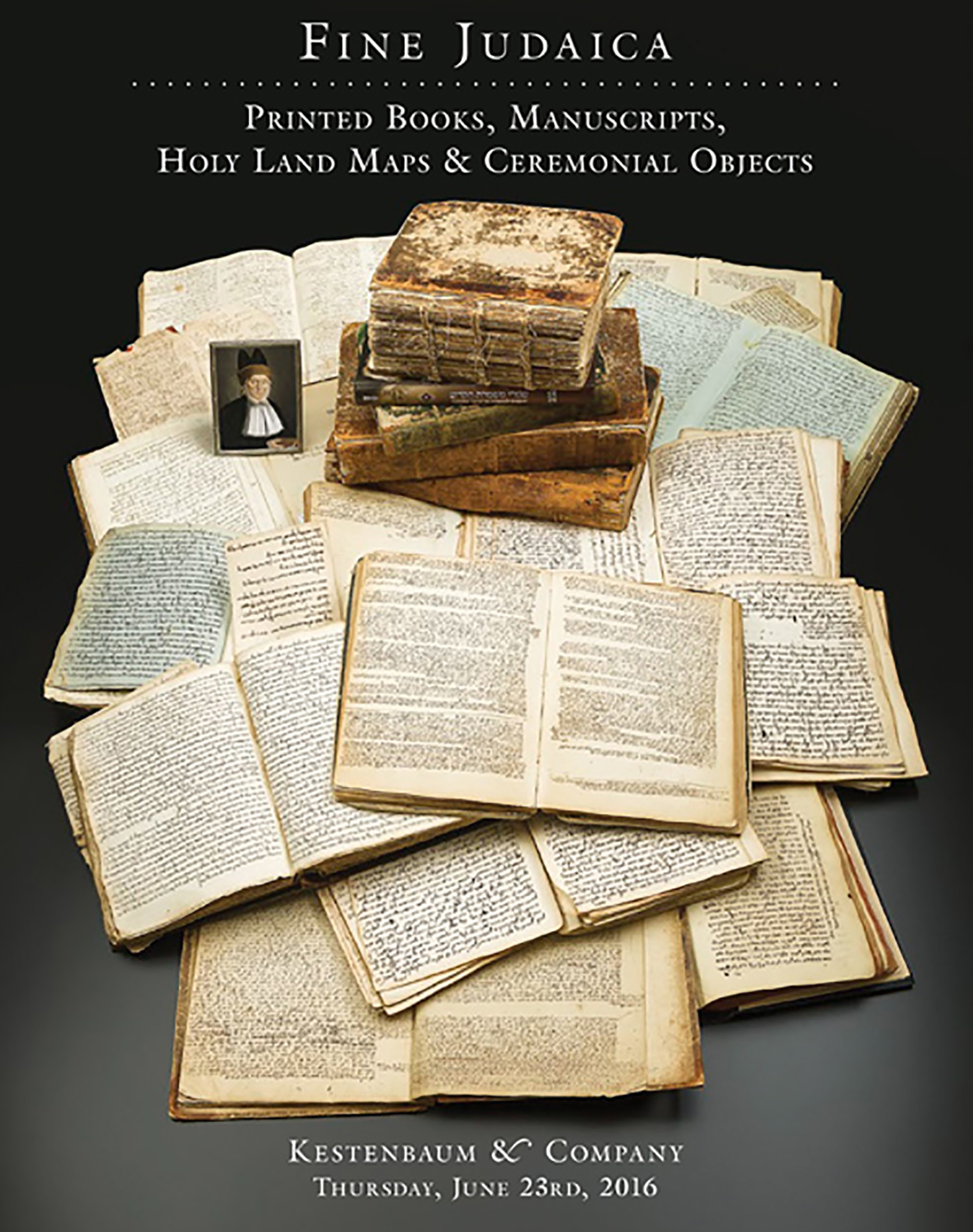(Liturgy). Seder shel Rosh Hashana KeMinhag K”K Lishla’ah [prayers Book for the New Year and Yom Kippur Eve]. According to the rite of Lisle-sur-la-Sorgue.

AUCTION 69 |
Thursday, June 23rd,
2016 at 1:00
Fine Judaica: Printed Books, Manuscripts, Holy Land Maps and Ceremonial Objects
Lot 221
(FRENCH JUDAICA).
(Liturgy). Seder shel Rosh Hashana KeMinhag K”K Lishla’ah [prayers Book for the New Year and Yom Kippur Eve]. According to the rite of Lisle-sur-la-Sorgue.
Lisle-sur-Sorgue: 1650
Est: $6,000 - $8,000
PRICE REALIZED $9,000
<<A RARE FRENCH LITURGIC RITE ACCORDING TO THE CUSTOM OF LISLE-SUR-la-SORGUE.>>
After the Expulsion from France in the late 14th-century, a handful of Jews remained in the semi-independent territories of the South, under the rule of the Counts of Provence. Four petite Jewish communities were tolerated in the French possessions of the Holy-See: Avignon, Carpentras, Cavaillon, and the smallest, Lisle-sur-la-Sorgue.
“Cut off for centuries from their fellow Jews in other countries, theses communities… evolved in the course of time their own particular species of Jewish culture, ranging from their Judeo-Provencal patois to their characteristic synagogal architecture, from their pronunciation of Hebrew to their folklore, from their calligraphy to their cuisine. Above all, as was natural, they evolved their own rite of prayers - the former Provencal rite, embellished with local peculiarities, prayers to suit local conditions and hymns by local poets” (see Cecil Roth, Studies in Books and Booklore (1972) pp. 81-2).
Some of the liturgical texts of these four “holy communities” were published internally in Avignon and Carpentras, while others were printed in Amsterdam. However, this Lisle-sur-la-Sorgue version, which differs in certain respects from the better known Avignon and Carpentras rites, was never independently published and circulated in manuscript only.
The text of these manuscript volumes includes Piyutim reserved for the High Holy days. The various types of Piyutim recited are entitled Bakashah, Reshuth, Pizmon, Siluk, Zolath, Meshulash, Selichah, Mustajib, Rehutah, etc. The final leaves of Vol. II contain the texts associated with eating symbolic foods on the first night of Rosh Hashanah.
Accompanied by a further description by Dr. I. O. Lehman including lists of the various Piyutim.
